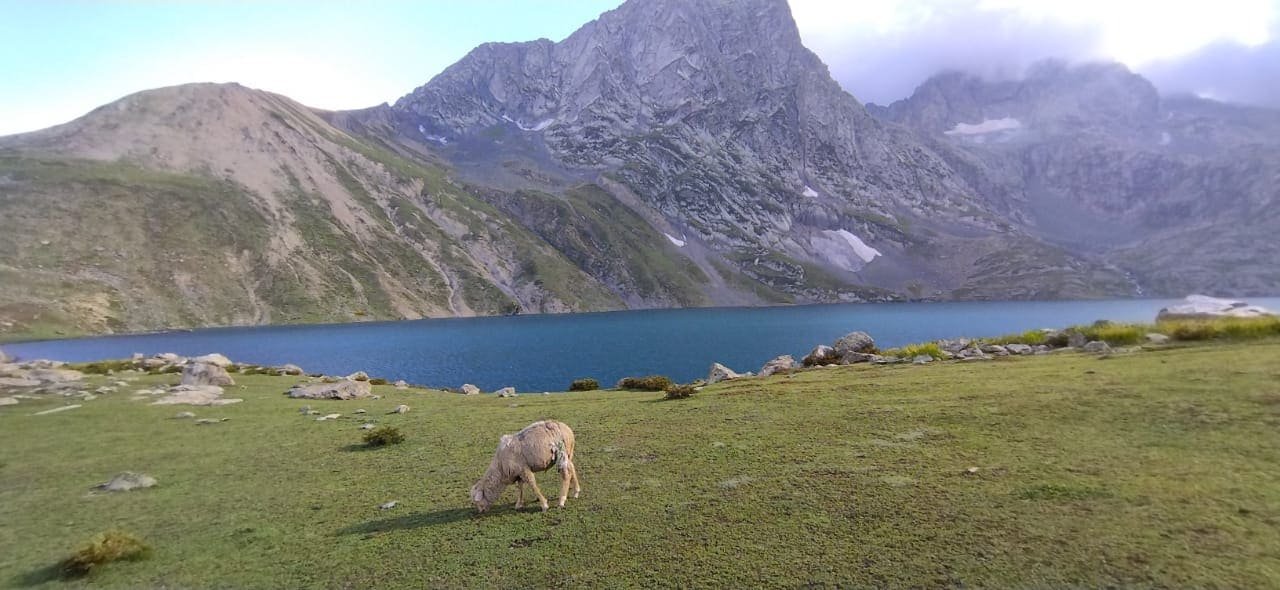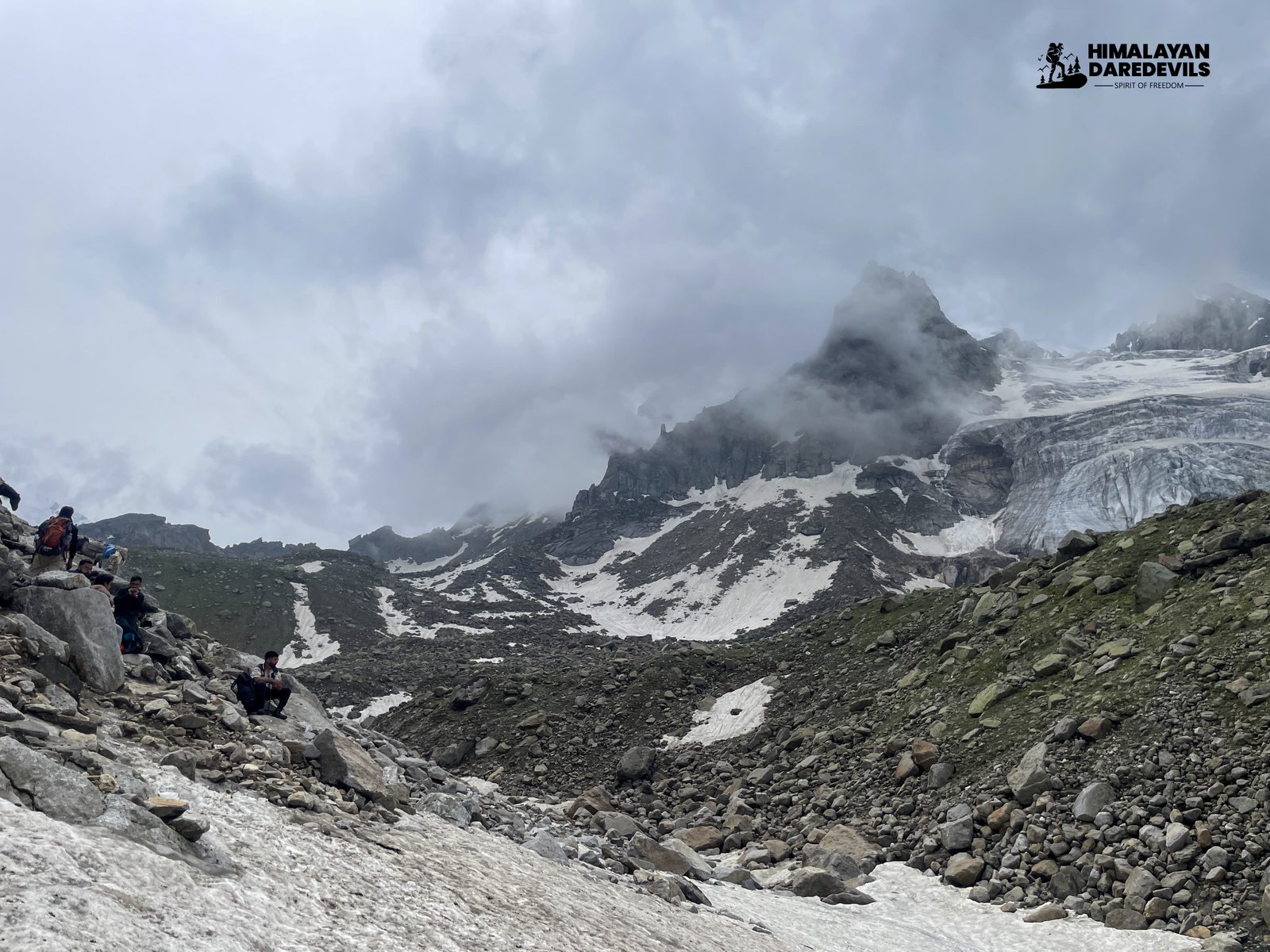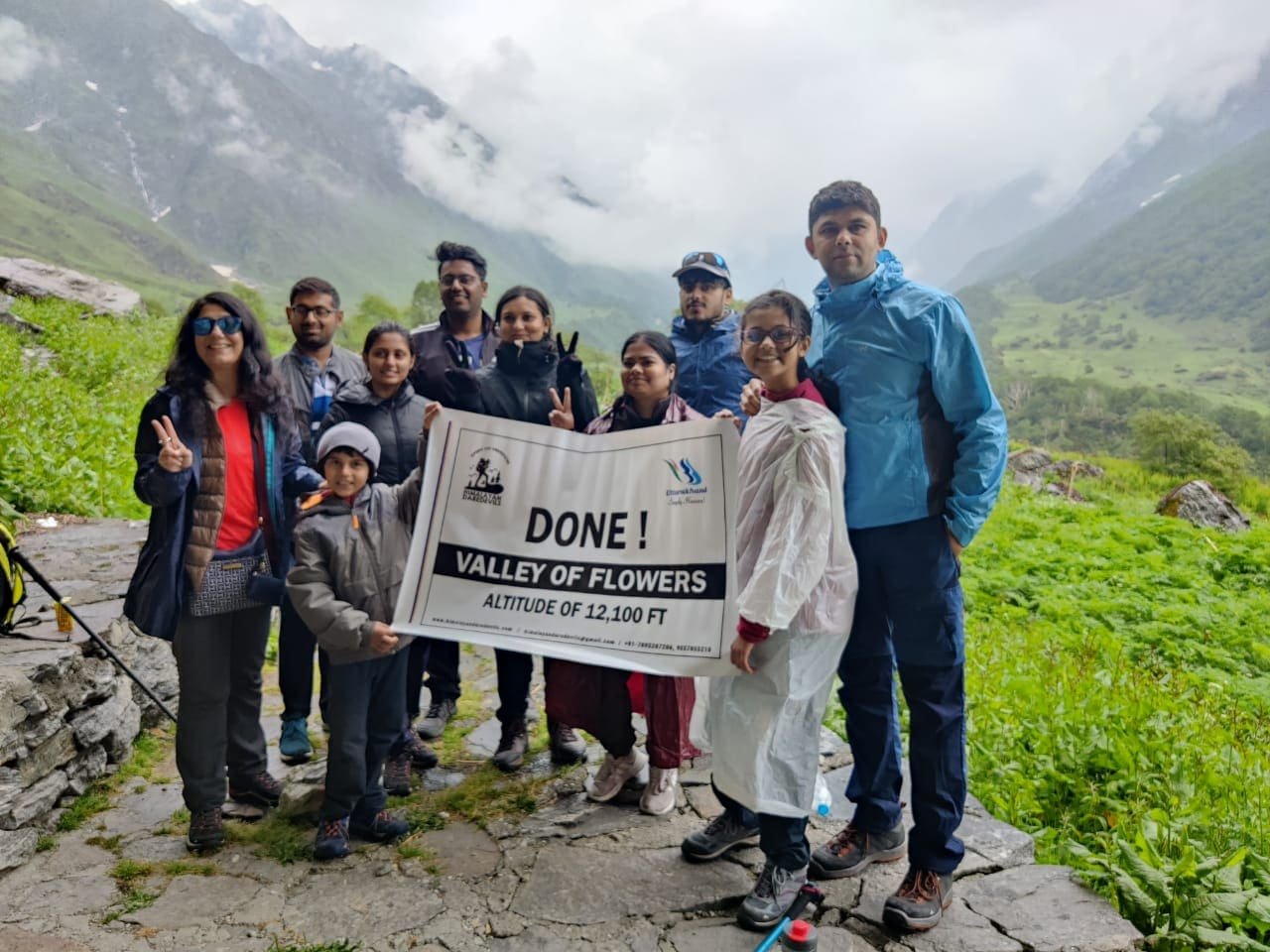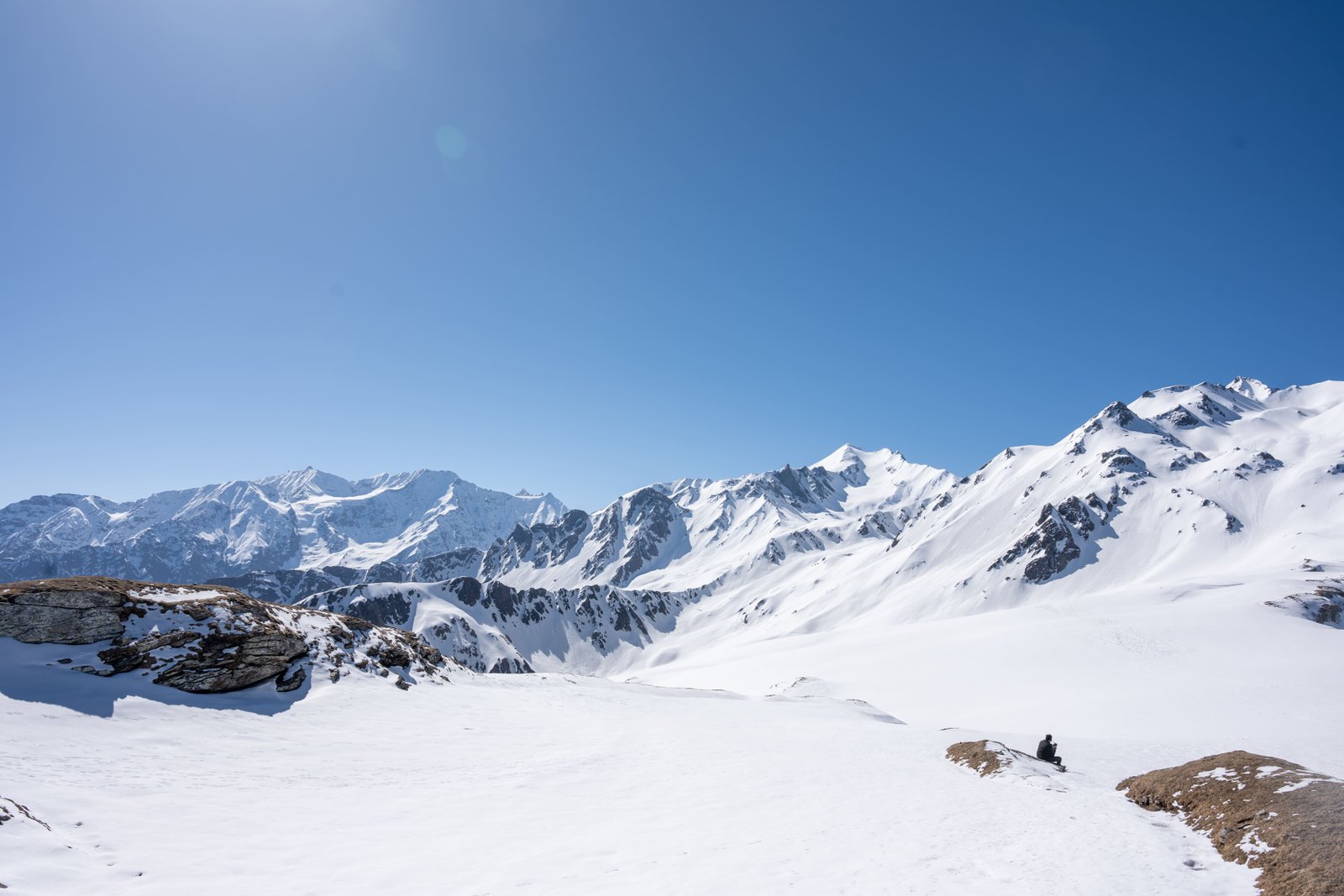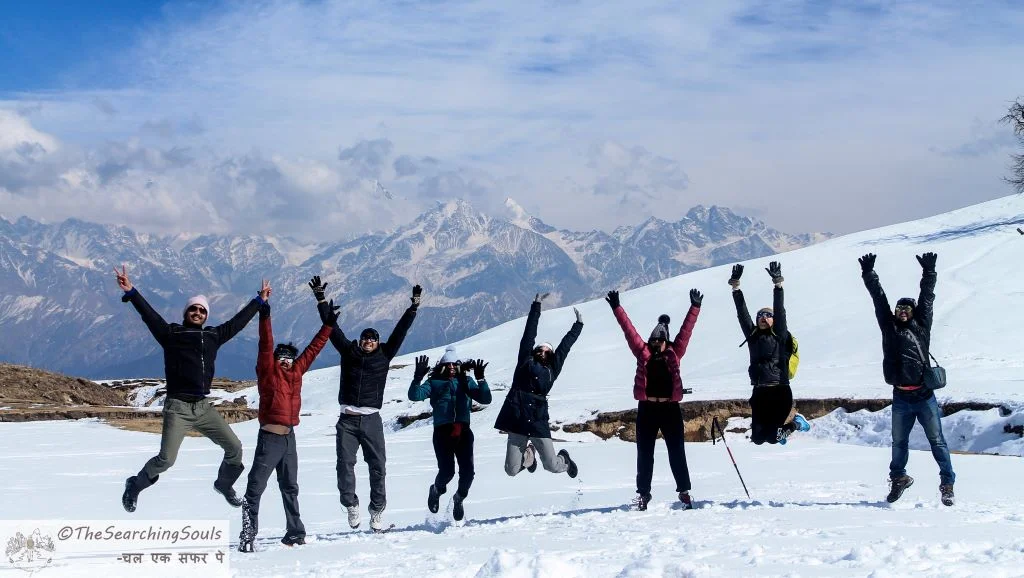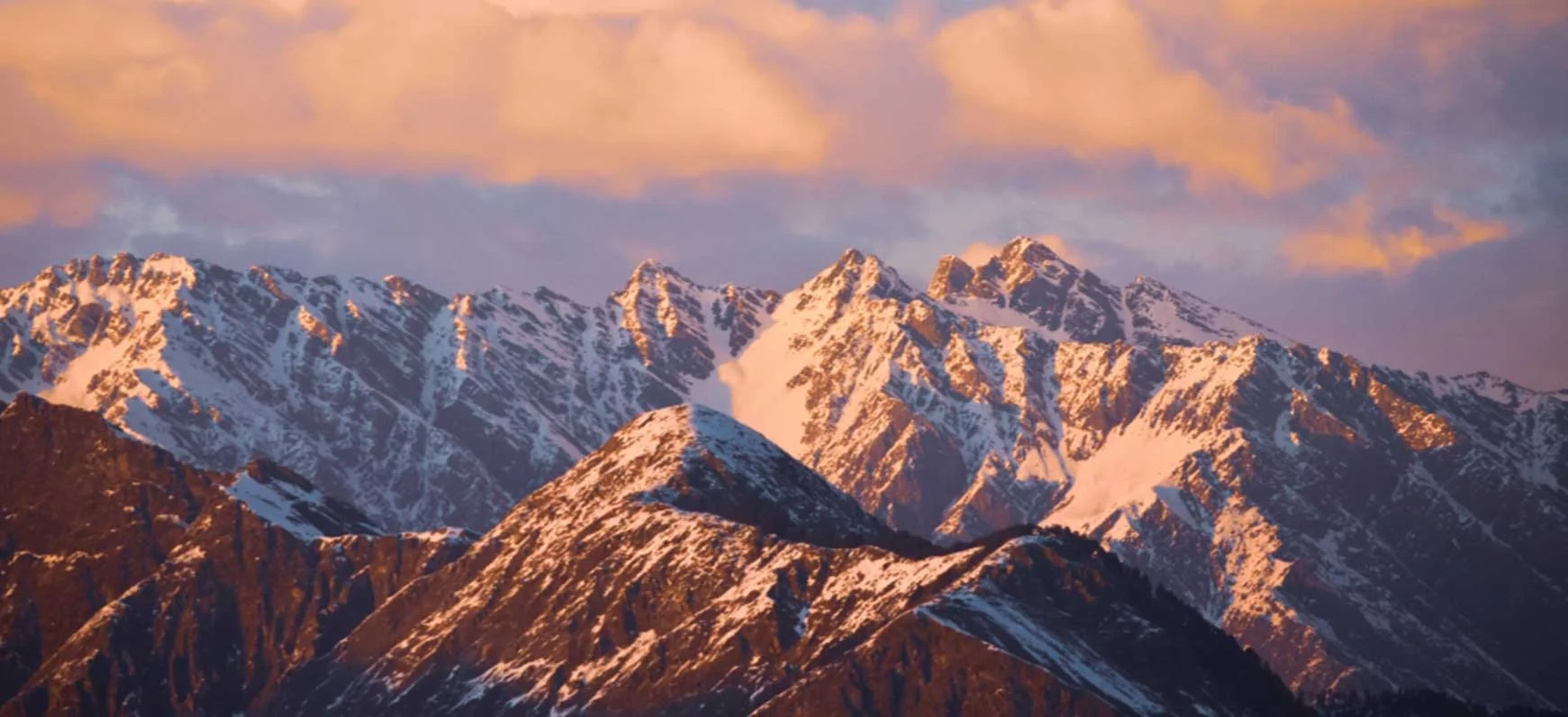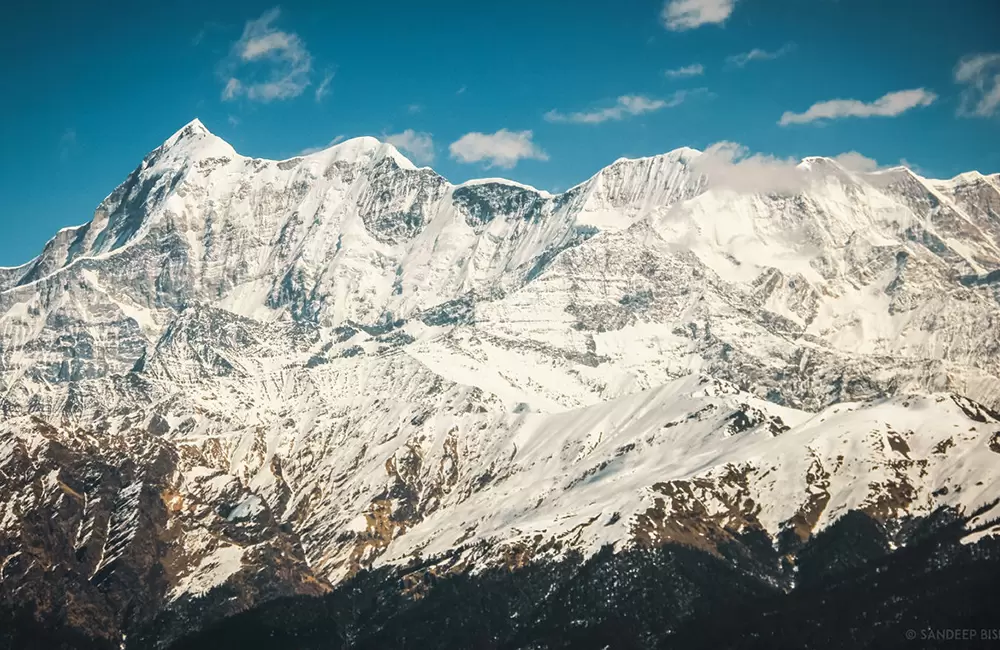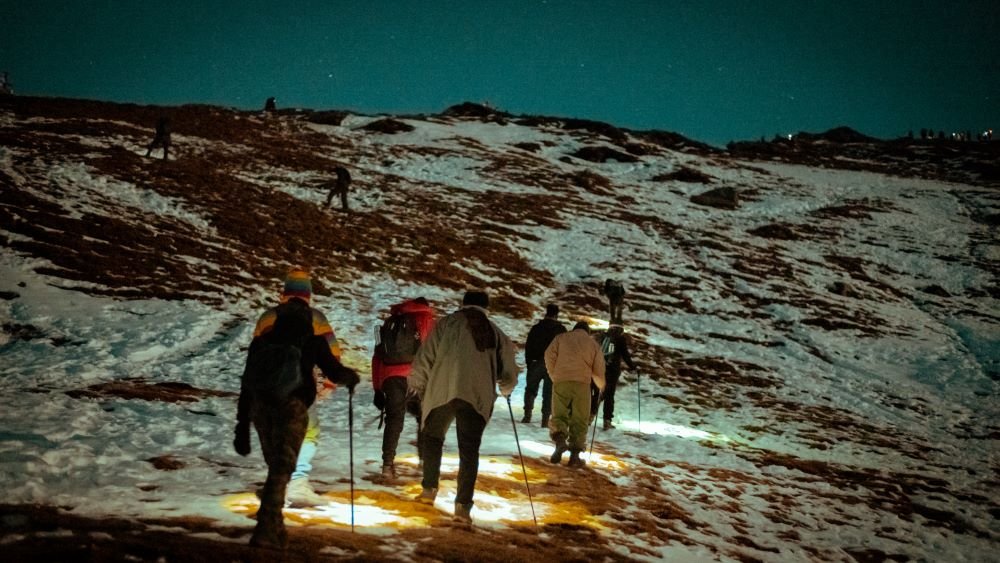12 May 2025
Kashmir in India has always been synonymous with beauty, its rolling green himalayan meadows and exotic snow capped mountain peaks have since forever attracted tourists from near and far. The search of thrilling landscapes that leave one speechless, has pushed the adventurers to explore the untouched and unseen corners of the Himalayas. In one of such corners lies The Kashmir Great Lakes Trek.
The Kashmir Great Lakes trek is tucked away at a relatively unknown edge of Kashmir. The journey, taking you to the 7 great lakes of Kashmir, lasts for about 7 to 9 days and stretches over 70 to 75 kms. Starting from Sonamarg, the trail ends at Naranag and in between you get to witness the surreal and remote Himalayas, from green meadows to high mountain passses and everything in between.
The seven glacial lakes that you visit one by one on the trek, some blue and some crystal clear, seem otherworldly. The scenery that surrounds those lakes are unique to this land; nothing in the world matches them. It was this same ethereal beauty of Kashmir that inspired Amir Khushrou to write these lines.
Agar firdaus bar roo-e zameen ast, Hameen ast-o hameen ast-o hameen ast
(English Translation: If there is a paradise on earth, It is this, it is this, it is this)
Quick Facts About Kashmir Great Lakes
Here are some quick facts about the Kashmir Great Lakes Trek-
Location: Kashmir Valley, Jammu & Kashmir, India
Start Point: Sonamarg
End Point: Naranag
Total Distance: ~70–75 km
Duration: 7 to 9 days
Altitude Range: 7,800 ft to 13,750 ft (Zaj Pass is the highest point)
Difficulty Level: Moderate to Difficult
Best Time to Visit: July to early September
Major Lakes Covered:
Vishansar Lake
Kishansar Lake
Gadsar Lake
Satsar Lakes (group of 7)
Gangbal Lake
Nundkol Lake
Permit Required: Yes (especially for Indian nationals); restrictions for foreigners
Mobile Network: Weak to no signal after Sonamarg
Accommodation: Tents (carry your own or use guided trek services)
Temperature Range:
Day: 10°C to 20°C
Night: -2°C to 5°C
Top Visual Highlights You Can’t Miss on the KGL Trek
Throughout the Seven lakes trek you will see the breathtaking jaw dropping views, but there are some moments that make this trek legendary and unforgettable:
Twin Lakes Of Vishansar and Kishansar-The experience of watching the sunrise from the Kishansar ridge will be something that you will never forget. Standing on the ridge you will see the twin emerald blue lakes, lying in silence, below the snow capped peaks, slowly revealed by the rising sun.
The Gadsar Pass- At an altitude of 13,750 feet, the Gadsar pass is the highest point of the trek. The pass will make you feel like you are on top of the world as you look down at the lakes you have passed. The road from here will take you to the snow covered fields.
Satsar Lake Cluster- ‘Satsar’ means ‘Seven lakes’, and it is named so because it is a cluster of seven interconnected lakes surrounded by mountains and pine trees. All seven of the lakes vary in size and water levels and some disappear in the drier seasons.
Shepherd’s Camps- The KGL trek goes through sparsely populated areas away from the modern world. The green meadows of this region is also the home to semi-nomadic shepherds known as the Gujjars. Throughout the trail you get an opportunity to witness their way of life and learn more about the local culture.
Must-See Lakes: Vishansar, Kishansar, Nundkol, and Gangabal
Vishansar Lake-
The name Vishansar means ‘The Lake of Vishnu’ . It is the first of the seven major lakes that you get to visit on the trek. The towering peaks stand proudly over the calm and crystal clear waters of the Vishansar Lake surrounded by green meadows. The lake is a beautiful spot to camp and see the Horses and sheeps grazing in the distance, a truly pastoral setting. The lake can be seen changing its color as the day progresses, from deep sapphire in the morning to almost teal at dusk.
Kishansar Lake
At a distance of almost 500 meters uphill from the Vishansar Lake you will find Lake Kishansar, its twin. Kishansar means ‘Lake of Krishna’, and the lake's higher altitude gives it a clearer and colder look. The best way to witness the twin lakes is to climb up to the Gadsar Pass and look down upon the snow fed streams slowly gathering to make the two lakes.
Nundkol Lake
The Lake of Nandi or the Nundkol lake is a revered lake and the final lake of the Kashmir Great Lakes Trek. The lake is sacred because it is believed that Lord Shiva meditated at Lake Harmukh and bathed in this Lake. The lake is filled by the Glacial streams coming from mount Harmukh, ice cold and pure.
Gangbal Lake
The Gangbal Lake is one of the largest lakes in Kashmir. This crescent shaped lake lies just below the Nundkhol lake and is surrounded by tall hills and green meadows. The site is also revered by the Kashmiri Pandits as it falls in the way of the Gangbal Yatra.
Flora, Fauna & Wildlife On The KGL Trek Route
The altitude and the remoteness of the 7 Lakes trek results in a unique and rare variety of flora and fauna.
The Flora- The summer brings many colorful flowers that cover the lush green meadows. Some of the flowers that you may find are:
Blue Poppy - The striking blue flowers, as blue as the alpine lakes, they dislike direct sunlight and cold winds, so they live shortly and are seen for a brief time in the summers.
Primula Capitata - Also known as round-headed Himalayan primrose this is also a short-lived alpine flower. The flower is violet in color and has an interesting shape.
Wild Buttercups - Beautiful and striking yellow flowers with small petals.
Apart from these different kinds of flowers you will find the lush green meadows and beautiful coniferous forests of Deodar, Fir and Maple along the way,
The Fauna- The Himalayas are also the home to various animals unique to the region and if you are luck and patient you will see them on your way.
Himalayan Mouse Hare (Pika)- A small hamster-like creature that lives hidden in the rocks and boulders.
Himalayan Ibex- Himalayan Ibex looks like a goat but with magnificent horns that curve back. The ibex is very good at climbing the hard terrain of the himalayan mountains, only the very lucky get to witness this creature.
Brown Bear - The himalayan bear is very shy and introverted, scared of humans more than the humans are scared of it. It is very difficult to find this creature in the wild but one must know that this is the region the bear calls home.
The Birds
Himalayan Monal - A beautiful bird with striking metallic colors that lives between the altitude 2400 to 4500 meters.
Golden Eagle - The Golden Eagle is found in the high altitude region of the Himalayas and it survives on mammals such as pikas and other birds.
Bearded Vulture- A Fascinating creature the bearded vulture has a ruff of feathers around its neck which gives it a striking appearance. This vulture is known to drop bones and animals from a height on rocks to open them up and access the marrow or the flesh inside.
Snow Pigeons - Snow pigeons have a black or grey head with white collar and white underparts. These birds are noble looking and are often seen swirling around rock faces and cliffs.
Sunset Views, Cloudscapes, and Meadows that Steal the Show
In your 7 to 9 day journey to the 7 great lakes of Kashmir you will get many opportunities to see the Sunset and Cloudscapes from beautiful locations, here are some of the spots that offer the best view:
Satsar Campsite: The wide expanse of the Satsar campsite offers an opportunity to see the sunlight create magic, falling on the tall hills and the green meadows, creating a mystical atmosphere.
Gadsar Pass: The Gadsar Pass offers a unique spot from where you can look down upon the twin lakes while seeing the setting or the rising sun.
Gangbal Lake: As the sun hides behind Mount Harmukh, you see the yellow sunlight spread its color on the gangbal lake, a perfect place to take out your cameras and capture the moment.
Nichnai Meadows: If you visit the Great Lakes Trek in July you get to witness the Nichnai Meadow filled with colorful wildflowers. This with the snow capped mountains behind gives this place a dreamlike quality.
Gadsar Lake: The cloudscape around the Gadsar lake is haunting, the swirling clouds surrounding the lake give the whole scene a mysterious charm.
Local Stories and Traditions That Add to the Charm
The Himalayas are filled with stories, tales and legends that are as old as time itself. These hills are often said to be the abode of mischievous spirits and fairies, along with that, lakes like the Gangbal lake hold great significance to the locals.
The Gangbal lake is considered to be Ganges of Kashmir by the Kashmiri Pandits, and it is believed that Lord Shiva meditated at Mount Harmukh and then took a bath in the Gangbal Lake. This is the reason why each year the Gangbal Yatra is made by Kashmiri Hindus.
Ideal Season and Weather Conditions for the KGL Trek
The Kashmir Great Lakes region remains snowbound for most of the year, and is only accessible from Mid-June to Mid-September. The best overall time to visit the KGL trek is the month of Mid July to Late August, as during these months the skies are crystal clear and the trek is fully accessible. Also the wild flowers come out in full bloom.
| Month | Trail Condition | Temperature | Notes |
| June | Partially Open | 10°C–15°C(Day) / 0°C–2°C(Night) | Early season, Less crowd, may have snow |
| July | Fully Open | 12°C–18°C (Day)/ 2°C–5°C (Night) | Best view of Flowers |
| August | Excellent | 15°C–20°C(Day) / 3°C–6°C(Night) | Best time for trekking |
| September (Early) | Excellent | 10°C–15°C(Day) / 0°C–3°C(Night) | Crisp Air |
| September (Late) | Closing soon | 14°C-20°C (Day)/ 3°C-6°C (Night) | Begins to snow |
| October- May | Closed | Sub - zero to 5°C | Not safe |
Why the Kashmir Great Lakes Trek Stays With You
The Kashmir Great Lakes trek is for anyone who has an appetite for adventure and a need to witness the beauty of mother nature. Each day of the KGL trek is unique, each day brings new unseen sights of the wild Himalayas. The 7 lakes, each different from the other, stand in complete silence but they stir something deep within you. The lakes are not just beautiful but many of them are also sacred, looking at them you look back into the ancient traditions and cultures still intact after thousands of years.

